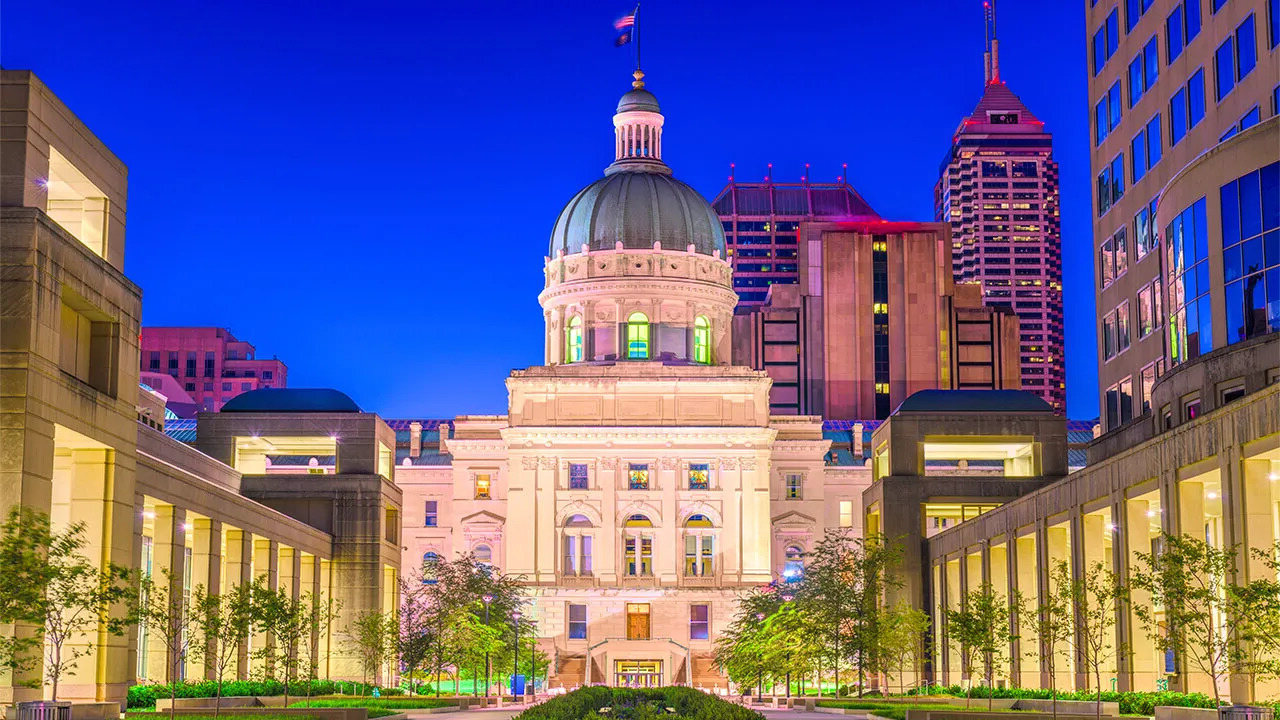What Was Indiana’s Capital Before Indianapolis? The Unexpected Answer

Ever wondered what Indiana's capital was before Indianapolis? Many people assume Indianapolis has always held that title, but history tells a different story. Before Indianapolis became the bustling hub it is today, another city served as the state's capital. This city, rich in history and charm, played a crucial role in Indiana's early development. Curious to know which city it was? Keep reading to uncover the surprising answer and learn a bit about the fascinating journey that led to Indianapolis becoming the capital. You might just find yourself planning a visit to this historic gem!
Indiana's Early Capitals
Before Indianapolis became the capital of Indiana, the state had other capitals. Let's explore these historical locations.
Corydon: The First State Capital
- Corydon
Corydon served as Indiana's first state capital from 1816 to 1825. Nestled in southern Indiana, this small town played a significant role in the state's early history. The state's first constitution was drafted here under the shade of the Constitution Elm. Corydon's historic downtown still retains much of its 19th-century charm.
Vincennes: The Territorial Capital
- Vincennes
Before Corydon, Vincennes was the capital of the Indiana Territory from 1800 to 1813. Located on the Wabash River, Vincennes is one of the oldest European settlements in Indiana. The town boasts historic sites like the George Rogers Clark National Historical Park and the Old Cathedral Complex, reflecting its rich past.
Moving the Capital to Indianapolis
The decision to move the capital to a more central location led to the selection of Indianapolis. This move aimed to make the capital more accessible to all residents of the state.
The Selection of Indianapolis
- Indianapolis
In 1825, Indianapolis was chosen as the new state capital. Its central location made it ideal for governance and trade. The city was planned specifically to serve as the capital, with a grid layout and a central circle, now known as Monument Circle. Today, Indianapolis is a bustling metropolis, far removed from its humble beginnings.
Why the Capitals Moved
Understanding why Indiana's capital moved helps appreciate the state's history. Each move reflected the needs and growth of the state at different times.
Accessibility and Growth
- Central Location
The move to Indianapolis was driven by the need for a more accessible location. As the population grew, a central capital made governance easier. This strategic decision helped Indiana develop into the state it is today.
Historical Significance
- Preserving History
Each former capital holds historical significance. Corydon and Vincennes are preserved as historical sites, offering a glimpse into Indiana's past. These towns celebrate their roles in shaping the state, with museums, monuments, and annual events.
Visiting Indiana's Former Capitals
Exploring Indiana's former capitals offers a unique journey through the state's history. Each town provides a different perspective on Indiana's development.
Corydon's Historic Sites
- Constitution Elm
The Constitution Elm in Corydon is where delegates drafted Indiana's first constitution. This historic tree symbolizes the state's birth and is a must-visit for history enthusiasts.
Vincennes' Rich Heritage
- George Rogers Clark National Historical Park
In Vincennes, the George Rogers Clark National Historical Park commemorates the capture of Fort Sackville during the American Revolution. This site highlights the town's strategic importance in early American history.
Indianapolis' Modern Appeal
- Monument Circle
Monument Circle in Indianapolis is the heart of the city. This iconic landmark represents the city's growth from a planned capital to a thriving urban center. Visitors can explore the Soldiers and Sailors Monument and enjoy the vibrant downtown area.
Indiana's journey from Vincennes to Corydon to Indianapolis reflects its evolving needs and growth. Each former capital offers a unique window into the state's rich history.
Indiana's Surprising First Capital
Indiana's first capital wasn't always Indianapolis. Corydon held that title from 1816 to 1825. This small town played a big role in shaping the state's early history. Corydon hosted the first state constitution convention and served as the hub for early government activities.
The move to Indianapolis happened because of its central location, which made it easier for people from all over the state to travel there. Today, Corydon remains a charming town with historical sites like the Corydon Capitol State Historic Site and the Constitution Elm.
Visiting Corydon offers a glimpse into Indiana's past and a chance to appreciate the state's journey from its early days to the present. Next time you're in Indiana, consider a trip to Corydon to see where it all began.

